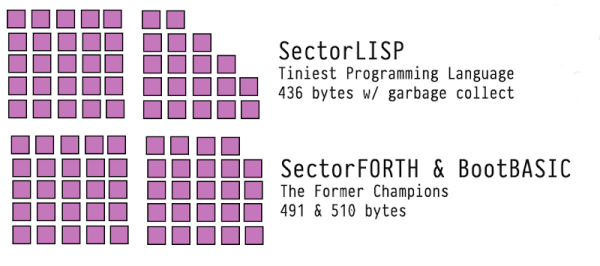You would assume that any programming language available back in the 1960s would be small enough to easily implement on today’s computers. That’s not always true though, since old languages sometimes used multiple passes. But in some cases, you can implement what would have been a full language decades ago in a tiny footprint. A case in point is a pretty good implementation of Lisp — including garbage collection — in 436 bytes.
SectorLISP claims to be the tiniest real language, beaten only by toy languages that are not really very useful. If you want to, you can try it in your browser, but that version has better error messages and persistent bindings, so it hogs up a whole 509 bytes.











